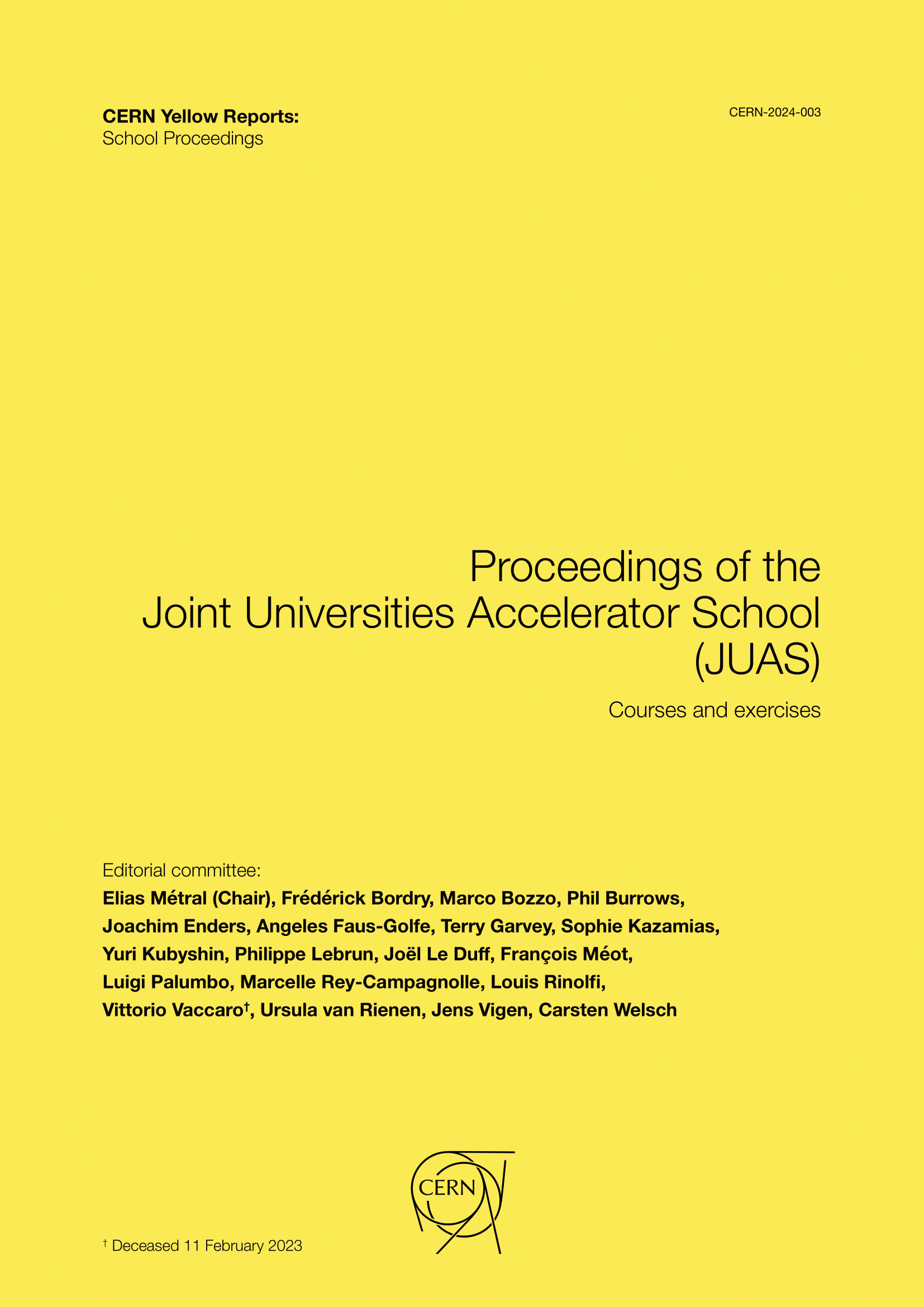Preface
DOI:
https://doi.org/10.23730/CYRSP-2024-003.vAbstract
When the decision was made to launch basic courses on the physics and technology of particle acceler- ators in the 1990s, this field was developing successfully at CERN, mainly for fundamental research in nuclear and particle physics. Not far from CERN, two other research laboratories were taking off and would soon gain an international reputation: 1) the Paul Scherrer Institute (PSI) in Villigen, Switzerland, with a large proton ring accelerator as its centrepiece; and 2) the European Synchrotron Radiation Facility (ESRF) in Grenoble, France. Taking advantage of the many technologies developed for these purposes, special applications related to health and industry were also being worked out. In the acceler- ator field, technicians and engineers learned their specialisation on the job and in specialised workshops organised by the laboratories, each lasting one or two weeks per year. Over time, and with the needs ahead, these learning opportunities began to appear insufficient; therefore, organising extensive courses, starting at the ground level, was considered to be necessary.
Skimming through the full volume has been a tonic experience. I would like to thank the editorial board for inviting me to write this preface, which I have done in an old-fashioned way, without using AI! “AU REVOIR!” said the penguins on the card signed by the first JUAS class in 1994. Today, I wish JUAS a long life!
Downloads
Published
Issue
Section
License
Copyright (c) 2024 CERN

This work is licensed under a Creative Commons Attribution 4.0 International License.
Authors who publish with this publication agree to the following terms:
- CERN retains copyright and publishes the work licensed under the Creative Commons Attribution License 4.0 that allows others to share the work with an acknowledgement of the work's authorship and initial publication in this series.
- Authors are able to enter into separate, additional contractual arrangements for distribution of the published version of the work (e.g., post it to an institutional repository or publish it in a book), with an acknowledgement of its initial publication in this series.
- Authors are permitted and encouraged to post their work online (e.g., in institutional repositories or on their website) prior to and during the submission process, as it can lead to productive exchanges, as well as earlier and greater citation of published work (See The Effect of Open Access).

